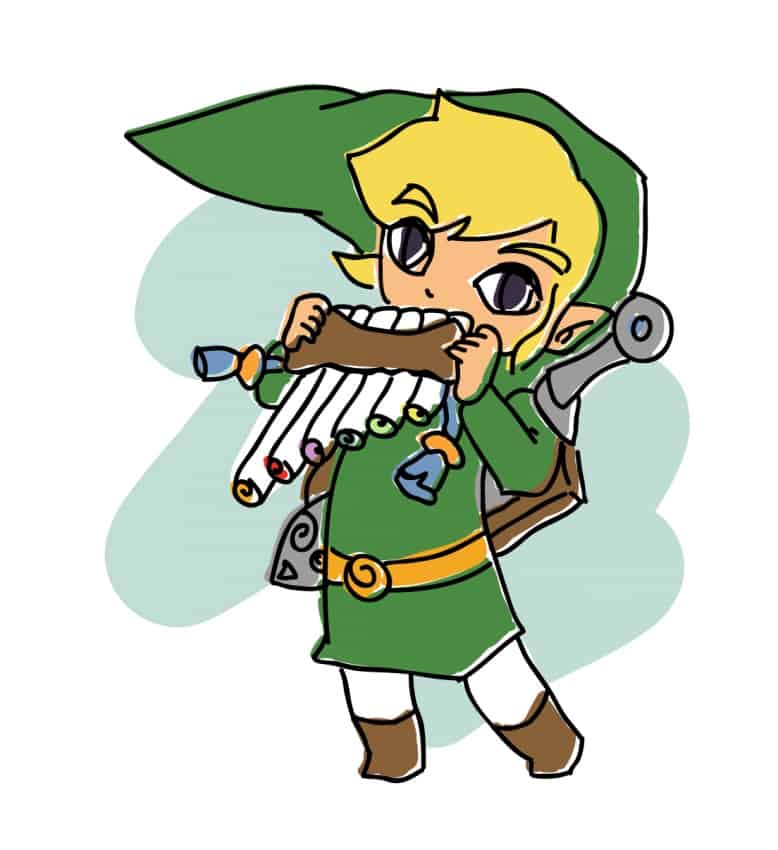 Nintendo’s latest is the culmination of twenty-five-plus years of game design mastery, an experience marked by a world that begs to be explored and a consistent feeling of fun and excitement from its opening hours to its stunning conclusion.
Nintendo’s latest is the culmination of twenty-five-plus years of game design mastery, an experience marked by a world that begs to be explored and a consistent feeling of fun and excitement from its opening hours to its stunning conclusion.
Legend of Zelda: Breath of the Wild promises the player open-ended gameplay and exploration that encourages players to find their own path through the game. It succeeds in this promise with fundamental gameplay mechanics centred around Link’s Sheikah Slate — a tablet-like device that allows Link access to a variety of abilities.
The player is given all the tools they need for their adventure within the first hour of gameplay. When combined with Link’s ability to climb nearly every vertical surface, players are invited to explore anything and everything that catches their eye. Beyond this, players are encouraged to experiment with the tools at their disposal, crafting personal and memorable moments that stick with them long after the credits roll.
The land of Hyrule is more beautiful than ever before, thanks to both gorgeously rendered cel-shaded graphics and a clear love put into everything — even each blade of grass within the game world. The world feels alive and invites the player to discover every cave and temple.
Furthermore, Breath of the Wild smartly innovates on the modern open-world formula by giving the player the bare minimum needed to survive. Instead of chasing a marker on a mini-map or looking at an arrow that signals you to follow it, Breath of the Wild entices players with intriguing architecture, bits of NPC dialogue and a very general geographical map. It is a genius design choice that makes exploration feel more rewarding.
Experimentation is key to the game’s combat. However, although generally fun and exciting, the combat can be repetitive at times. Link can wield swords, spears, clubs, elemental rods and other assorted items that allow players to approach combat scenarios in a variety of ways.
One of Breath of the Wild’s lower points is that weapons can break after repeated use. Though weapon fragility encourages continued experimentation and exploration, some tweaks to the overall implementation of the mechanic could benefit the game greatly.
Additionally, the inventory and menu management detracts from the overall experience by directly halting gameplay. Constantly having to stop to go into a menu to switch weapons, eat health-restoring food and change armour becomes a real drag on the overall experience.
The storyline in Breath of the Wild — though noticeably sparse compared to the series’ previous offerings — is a compelling enough reason to see the game through to its conclusion. The major moments that revolve around a set of Divine Beasts are some of the most exhilarating periods in the franchise’s history. Furthermore, Breath of the Wild’s quieter moments are genuinely touching and perfectly complement the game’s more thrilling aspects.
Whether it is your first misplaced jump that sends Link careening down a mountain or the one time you took down that boss with a creative and risky strategy, Breath of the Wild revels in the little moments. It respects the inherent curiosity within players and encourages creativity. It elicits emotions, not through curated set pieces — though those are present — but through player-driven actions.
It is through times of giddy excitement, smug satisfaction, forehead-slapping realization and stunned silence that the game truly succeeds. The game’s few grievances can largely be overlooked as relatively negligible to the overall package.
The Legend of Zelda: Breath of the Wild is game design perfection, driven by the player’s actions and ambitions, and easily stands as not only one of the best games of 2017, but quite possibly, one of the best games ever made.
—
Reid Braaten
Graphic: Lesia Karalash / Graphics Editor